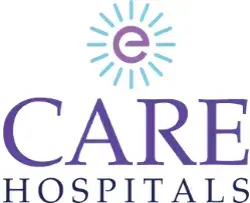-
Doctors
-
Specialities & Treatments
Centre of Excellence
Specialties
Treatments and Procedures
Hospitals & Directions HyderabadCARE Hospitals, Banjara Hills CARE Outpatient Centre, Banjara Hills CARE Hospitals, HITEC City CARE Hospitals, Nampally Gurunanak CARE Hospitals, Musheerabad CARE Hospitals Outpatient Centre, HITEC City CARE Hospitals, Malakpet
HyderabadCARE Hospitals, Banjara Hills CARE Outpatient Centre, Banjara Hills CARE Hospitals, HITEC City CARE Hospitals, Nampally Gurunanak CARE Hospitals, Musheerabad CARE Hospitals Outpatient Centre, HITEC City CARE Hospitals, Malakpet Raipur
Raipur
 Bhubaneswar
Bhubaneswar Visakhapatnam
Visakhapatnam
 Nagpur
Nagpur
 Indore
Indore
 Chh. Sambhajinagar
Chh. SambhajinagarClinics & Medical Centers
Book an AppointmentContact Us
Online Lab Reports
Book an Appointment
Consult Super-Specialist Doctors at CARE Hospitals

Robot-Assisted VEIL Surgery (Inguinal Lymph Node Dissection)
- Advanced Technology
- Shorter Hospital Stay
- Pre & Post-Operative Care
- All Insurance Accepted

Chat With Our Experts
Get second opinion on Whatsapp
25 lakhs+
Happy Patients
Experienced and
skilled surgeons
17
Health Care Facilities
Top most Referral Centre
for Complex Surgeries
Robot-Assisted VEIL Surgery (Inguinal Lymph Node Dissection)
Traditional inguinal lymph node dissection procedures carry a staggering complication rate, often resulting in serious issues such as flap necrosis, leg oedema, and lymphocele. However, Robot-assisted Video-Endoscopic Inguinal Lymphadenectomy (RAVEIL) has emerged as a groundbreaking solution to these challenges.
This comprehensive guide explores the advantages of Robot-assisted VEIL, its surgical process, and recovery expectations. Readers will learn about suitable candidates for this procedure, preparation requirements, potential risks, and the significant benefits that make RAVEIL an increasingly preferred choice for inguinal lymph node dissection.
Why CARE Group Hospitals is Your Top Choice for Robot-assisted VEIL (Inguinal Lymph Node Dissection) Surgery in Hyderabad
CARE Hospitals has established itself as a premier destination for Robot-assisted VEIL (Inguinal Lymph Node Dissection) procedures in Hyderabad through its commitment to surgical excellence and patient-centred care.
What truly sets CARE Hospitals apart is its team of extensively trained and highly experienced surgeons who specialise in robot-assisted procedures. These doctors are dedicated to providing top-tier surgical treatments for urological conditions requiring inguinal lymph node dissection.
Despite the advanced technology, it's worth noting that the robots never operate independently. The entire system is entirely controlled by experienced surgeons, with the robot-assisted technology serving as a mechanical helping hand that follows the surgeon's instructions precisely.
CARE Hospitals offers a multidisciplinary approach for patients with co-morbidities, ensuring comprehensive care before, during and after Robot-assisted VEIL procedures. The hospital maintains an exclusive operation theatre complex specifically remodelled for robot-assisted surgeries, supported by 24/7 imaging, laboratory, and blood bank services.
Cutting-edge Surgical Innovations at CARE Hospitals
CARE Hospitals has pioneered advanced robot-assisted technologies for surgical procedures, establishing a new standard in precision medicine. The hospital employs cutting-edge Robot-Assisted Surgery (RAS) technologies, specifically the Hugo and Da Vinci X Robotic systems, to perform complex procedures like Robot-assisted VEIL (Inguinal Lymph Node Dissection). These sophisticated systems represent the pinnacle of surgical innovation at CARE Hospitals.
The robot-assisted systems at CARE Hospitals feature several innovative components that specifically benefit robot-assisted lymph node dissection:
- Enhanced Surgical Precision: The robotic arms mimic human wrist movements with a greater range of motion than human hands, allowing for precise dissection of lymph nodes
- Superior Imaging Technology: 3D magnification provides up to 10-15 times magnification of the surgical site
- Data-Driven Decision Making: Access to information from previous operations helps surgeons make better judgements
- Console-Based Control: Surgeons view patients via terminals and manipulate robotic surgical instruments through adjoining control panels
Conditions for Robot-assisted VEIL (Inguinal Lymph Node Dissection) surgery
Patients with the following cancers often require robot-assisted inguinal lymph node dissection:
- Skin cancers: Particularly melanoma and certain carcinomas that start in the legs or torso
- Penile cancer: Especially those classified as at least pT1b with no clinically palpable nodes
- Vulvar cancer: When spread to inguinal lymph nodes is suspected
- Anal cancer: Including squamous cell carcinoma of the anal canal
- Rectal adenocarcinoma: In selected patients with isolated inguinal lymph metastases
Know Your Procedure
Knowing each step, from initial preparation through the advanced surgical procedure to your recovery period, empowers you as a patient.
Pre-surgery Preparation
Your surgeon will provide specific instructions several days prior to your Robot-assisted VEIL procedure. These include:
- Stop taking certain medications that could affect bleeding during surgery
- Avoid eating or drinking anything within a specified timeframe before the operation to prepare for anaesthesia
Robot-assisted VEIL (Inguinal Lymph Node Dissection) Procedure
The surgical team positions patients in a low lithotomy position for optimal access to the inguinal region. Once positioned, the procedure begins with careful marking of anatomical landmarks to form an inverted triangle that guides the dissection area.
Throughout the operation, the robot never functions independently but remains completely under the surgeon's control, offering enhanced precision and visualisation compared to traditional techniques.
Post-surgery Recovery
Typically, patients remain in the hospital for two to four days following robot-assisted inguinal lymph node dissection. Shortly after surgery, medical staff encourage early mobilisation once it becomes safe. Depending on the drainage volume, a drainage tube stays in place to collect excess fluid, potentially remaining for several days to weeks. Complete recovery generally takes several weeks to months (2-3 months).
Risks and Complications
The most frequent complications following Robot-assisted VEIL include:
- Infection at the incision site
- Fluid buildup (seroma) and swelling
- Lymphedema in the lower legs
- Blood clots
- Poor wound healing
- Numbness in the upper thigh
- Wound necrosis
Benefits Of Robot-assisted VEIL (Inguinal Lymph Node Dissection) Surgery
Robot-assisted VEIL procedures represent a significant advance in surgical treatment, offering numerous advantages over traditional open inguinal lymph node dissection.
The most striking benefit lies in the reduction of complications. The robot-assisted approach demonstrates:
- Fewer wound infections compared to open surgery
- Reduction in skin necrosis cases
- Lower rates of lymphedema
- Reduced blood loss during the procedure
Insurance Assistance for Robot-assisted VEIL Surgery
Managing the financial aspects of robot-assisted surgery can cause concern for many patients considering Robot-assisted VEIL procedures. Fortunately, health insurance options have improved significantly in recent years, offering better support for advanced surgical techniques.
At CARE Hospitals, our team will guide you through every step, including:
- Hospitalisation expenses
- Surgery and doctor's fees
- Nursing and ICU charges
- Pre-hospitalisation and post-hospitalisation costs
- Some policies even cover ambulance services
Second Opinion for Robot-assisted VEIL (Inguinal Lymph Node Dissection) Surgery
Video-endoscopic Ileoinguinal Lymphadenectomy using robotic assistance requires specific expertise and experience that varies among surgeons. This advanced technique, primarily used for urological cancers and melanomas, demands consultation with specialists who regularly perform these complex operations.
When considering experts for Robot-assisted VEIL consultations, patients should prioritise surgeons certified as console operators in the DaVinci Intuitive Robot-assisted surgical system. These specialists possess the technical proficiency for minimally invasive procedures with optimal outcomes. Consulting with surgeons who routinely perform complex robot-assisted operations in urooncology provides valuable perspectives on treatment alternatives.
Conclusion
Robot-assisted VEIL stands as a major advancement in inguinal lymph node dissection surgery. Patients benefit from shorter hospital stays, faster recovery, and significantly lower risks of wound infections and lymphedema.
CARE Hospitals leads the way with state-of-the-art robotic systems and experienced surgeons who specialise in these procedures. Though robot-assisted surgery costs more than traditional methods, the dramatic reduction in complications and faster recovery time make it a worthwhile investment for suitable candidates.
Frequently Asked Questions
Robot-assisted VEIL is a minimally invasive surgical procedure that removes lymph nodes from the groin area.
Yes, Robot-assisted VEIL is considered a major surgery that requires general anaesthesia and hospitalisation
No, Robot-assisted VEIL has significantly lower risks than traditional open surgery.
The most common reasons for performing Robot-assisted VEIL include:
- Checking for cancer spread from nearby areas (penis, vulva, anus, or skin)
- Removing cancerous lymph nodes
- Preventing cancer from spreading further
- Staging melanoma and other skin cancers
The average operative time per limb for Robot-assisted VEIL is approximately 90 minutes.
Even with advanced techniques, some risks remain, including:
- Wound infection
- Seroma formation
- Wound necrosis
- Hematoma development
- Lymphedema
Recovery from Robot-assisted VEIL surgery happens in stages. Physical healing of incisions: 2-3 weeks
- Return to full energy levels: 4-6 weeks
- Complete lymphatic system recovery: 2-3 months
Patients typically experience some discomfort after robot-assisted inguinal lymph node dissection, but it's generally well-managed with medication.
Ideal candidates for Robot-assisted VEIL include patients with non-palpable inguinal lymph nodes who have intermediate to high-risk primary tumours. Likewise, patients with unilateral palpable non-fixed inguinal lymph nodes measuring less than 4 cm are suitable candidates.
Returning to normal activities occurs gradually. Patients must restrict physical activities, including driving, for about 4-6 weeks.
Early mobilisation is encouraged once it's safe following surgery. Walking helps build strength and prevents blood clot formation in the legs.
Complete recovery typically takes several weeks, during which you must limit certain physical activities. Patients should restrict activities like driving for about four to six weeks after their robot-assisted lymph node dissection. The surgeon will provide specific guidance about permitted activities during the recovery phase.
Still Have a Question?

